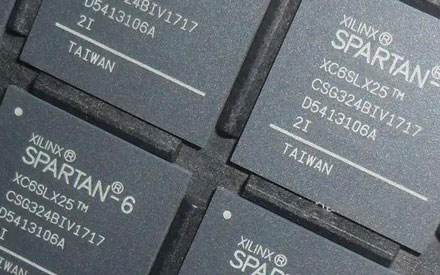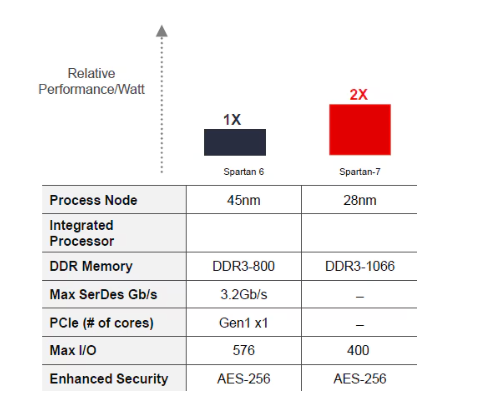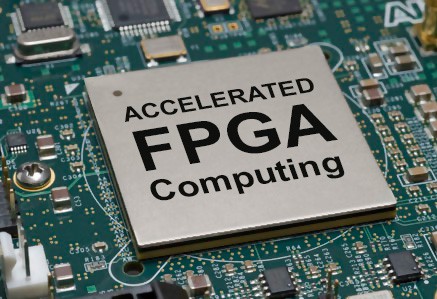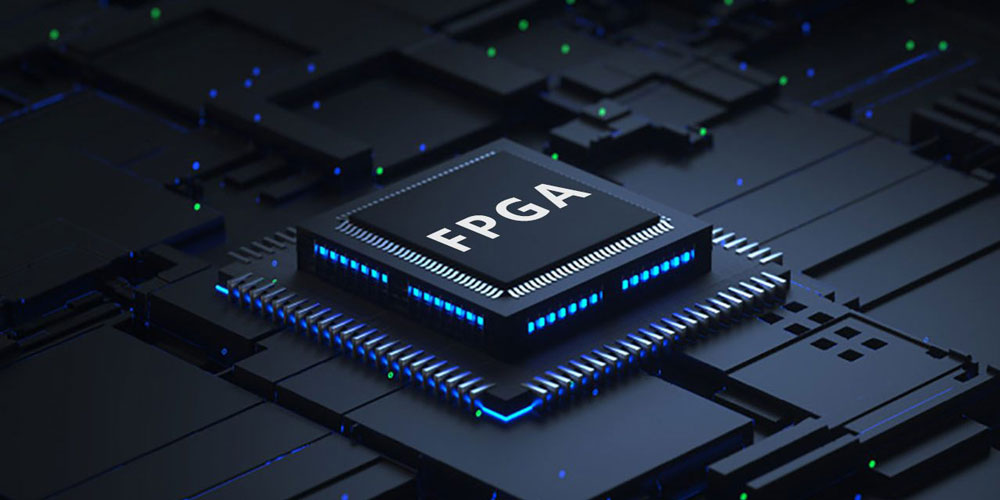The Best Guide to Spartan-6 chip
Introduction
Spartan-6 is a programmable logic chip (FPGA) launched by Xilinx, which is the sixth generation product of the Spartan series. Spartan-6 chips are highly flexible and reconfigurable and can be used in many fields such as communications, industrial automation, and embedded systems. This article will introduce the characteristics and applications of the Spartan-6 chip.
Table of Content
1. What is the Spartan-6 chip?
The Spartan-6 chip is a programmable logic chip (Field-ProgrammableGateArray, FPGA) developed and produced by Xilinx. An FPGA is an integrated circuit whose internal logic gates, registers, and interconnect structures can be programmed and configured according to the designer's needs. Unlike traditional fixed-function chips, FPGAs are highly flexible and reconfigurable, allowing customers to implement various digital circuit functions as needed.
The Spartan-66 chip is a programmable logic chip (Field-ProgrammableGateArray, FPGA) developed and produced by Xilinx. An FPGA is an integrated circuit whose internal logic gates, registers, and interconnect structures can be programmed and configured according to the designer's needs. Unlike traditional fixed-function chips, FPGAs are highly flexible and reconfigurable, allowing customers to implement various digital circuit functions as needed.

Figure1-Spartan-6
2. Where is Spartan-6 used?
Spartan-6 chips are widely used in various industries. The following are some common application areas:
2.1 Communication
Spartan-6 chips play an important role in the field of communications. It can implement various communication protocols and standards such as Ethernet, USB, PCI-Express, etc. High-performance communication devices such as routers, switches, and modems can be built by equipping them with appropriate logic circuits and communication interfaces.
2.2 Industrial automation
In the field of industrial automation, Spartan-6 chips can be used in the design and implementation of control systems. It connects sensors and actuators and processes input and output data in real-time. Through programming and configuration, complex control logic can be established to realize automatic production lines, robot control, and process monitoring.
2.3 Embedded systems
Spartan-6 chips are also widely used in embedded systems. It can be used as an external module around the core processor, working with a microcontroller or microprocessor. Through the programmability of FPGA, system functions can be flexibly expanded and customized to meet the needs of different applications.
2.4 Video and image processing
The Spartan-6 chip has strong processing capabilities in the field of video and image processing. It can achieve high-speed data transmission and complex algorithm calculations and is used in applications such as video encoding, image recognition, and digital signal processing. High-quality image and video processing effects can be achieved through appropriate logic circuits and algorithms.
In summary, the Spartan-6 chip is a powerful programmable logic chip with a significant range of applications. It plays an important role in communications, industrial automation, embedded systems, and video image processing, providing flexibility and reconfigurability to meet different application needs.

Figure2- Video and image processing
3. Why Xilinx Spartan-6 FPGA is popular?
Memory: Limited onboard memory with small RAM and flash for data logging, accessible via serial and USB ports. SPI Flash memory device, 8MB capacity, 400MHz speed, 400Mbit/sec throughput.
I/O Ports: Two USB ports, two RS232 serial ports, and four GPIO pins. Serial ports support up to 6Mbps. Used for interfacing with other devices, data logging, and communication.
Resources: Minimum 4MB Co-Processor Cache memory, optimized for data-intensive applications. Dedicated I/O pins for device communication without additional software.
Design Resources: Includes Spartan-6 FPGA socket, SPI Flash memory, at least 2MB RAM. Suitable for various development tasks.
Cost: Highly cost-effective, less than USD 45. Significant savings compared to other boards, suitable for hobbyists and production users.
Production Capabilities: Can be mass-produced using standard FPGA manufacturing process. Configurable options for features like USB and RS232, reducing cost and size.
Reliability: Low failure rate, less than five failures in the last two years. Reliable design and manufacturing processes minimize physical damage or interference.
Networking Capabilities: Operates standalone or via Ethernet network. Includes network interface chips for direct communication with other devices, useful for development and debugging.
4. Spartan 6 Value Features
|
Value |
Features |
|
Programmable System Integration |
Elevated pin-to-logic ratio for improved I/O connection More than 40 I/O standards for PCI Express® with integrated endpoint block for streamlined system architecture |
|
Increased System Performance |
Eight 800Mb/s DDR3 low-power 3.2Gb/s serial transceivers with an integrated memory controller are possible. |
|
BOM Cost Reduction |
MicroBlazeTM processor soft IP, which eliminates the need for external CPU or MCU components, is cost-optimized for system I/O growth.
|
|
Total Power Reduction |
1.0V or 1.2V core voltage options are available.
|
|
Accelerated Design Productivity |
Made possible via the free front-to-back
|
5.Spartan-6 vs Spartan-7 FPGAs
Xilinx released the Spartan-6 in 2009 and the Spartan-7 the following year. Production quantities decline and older technologies become less cost-effective when semiconductor fabs transition to newer process nodes. As Spartan-6 parts are now in short supply, Xilinx is promoting the transfer of designs to the more recent Series 7 FPGAs.
To help with that move, Xilinx has done a fantastic job of detailing the changes between the Spartan-6 and Spartan-7 FPGAs. The white paper and webinar, both co-authored by Adam Taylor of Andiuvo Engineering, are the two most excellent references that I have come across.
Webinar Mastering the Migration Journey from Spartan-6 FPGAs
Hardware differences
The Series 7 FPGAs are constructed using the next-generation process node, which is shifted from 45nm to 28nm, which is a substantial change. Higher performance, increased circuit density, and reduced power are made possible by this. According to the chart below, the Spartan-7 outperforms the Spartan-6 in terms of relative performance per watt. The memory speed improvement from DDR3-800 to DDR3-1066 is also displayed in the chart.
A reduced Max I/O count (400 vs.576) and the absence of transceiver cores (Gb SerDes and PCIe) are two compromises associated with the Spartan-7. Artix-7 FPGAs must be used to implement the design if these functionalities are necessary.

Figure3-Spartan-6 vs Spartan-7 FPGAs
In addition, there are other noteworthy architectural modifications. The following table contains a list of these.

Figure4- noteworthy architectural modifications
Toolchain differences
Between Spartan-6 and Spartan-7, the development toolchain has also seen major advancements. Xilinx ISE is used for hardware development on the Spartan-6, while Xilinx SDK is used for software development. The Spartan-7 devices are using the more recent Vivado tool for hardware and Vitis for software. Using these new tools results in a significant increase in design efficiency. Working with pure RTL designs is possible with Vivado, but it also makes use of a sizable IP library that is controlled by the Vivado IP integrator. Software-wise, Vitis is a single, integrated platform that offers a high-level framework with freely available libraries that have been tailored to function with Xilinx FPGAs.
Summary
The capabilities and toolchains of the more recent generation of Spartan-7 devices should enable the design migration from legacy components, although Spartan-6 devices are approaching end-of-life (EOL) and should not be taken into consideration for new designs. It could be necessary to use a different 7 Series item than the Spartan-7 due to the unique IP and IO requirements used in the Spartan-6 design.
With a few exclusions needing additional 7 Series parts, the Spartan-7 offers superior performance, power efficiency, and an enhanced toolchain, making it an obvious choice for new designs.


 A Comprehensive Guide to Grasping FPGA Structure6/20/2024 737
A Comprehensive Guide to Grasping FPGA Structure6/20/2024 737FPGA (Field-Programmable Gate Array) is an integrated circuit, a type of programmable chip, that allows engineers to program custom digital logic. It can change its hardware logic based on the program, with the primary purpose of enabling engineers to redesign and reconfigure their chips faster and cheaper, whenever they want. However, nothing in the world is ideal, and FPGA chips also have limitations!
Read More > The EU to Impose Tariffs on Electric Vehicle Imports from China in Early July6/17/2024 372
The EU to Impose Tariffs on Electric Vehicle Imports from China in Early July6/17/2024 372The EU to Impose Tariffs on Electric Vehicle Imports from China in Early July
Read More > What is XC7A100T-2FG484I?6/6/2024 533
What is XC7A100T-2FG484I?6/6/2024 533XC7A100T-1CSG324C is an FPGA-based digital signal processing board, which consists of Xilinx's Virtex-7 series chips and FPGA interface chips.
Read More > Analog cycle inventory hits bottom, AI drives flash memory demand to continue6/4/2024 553
Analog cycle inventory hits bottom, AI drives flash memory demand to continue6/4/2024 553Analog cycle inventory hits bottom, AI drives flash memory demand to continue
Read More >
Hot News
- Electronic Component Symbols: Resistor, Capacitor, Transformers and Connectors
- Diode Overview: Application in Automotive Alternator Rectifiers
- Voltage-Controlled Oscillator: Principle, Type Selection, and Application
- Ultra-low power consumption of STM32U575/585 microcontrollers(MCU)
- What is Xilinx 7 Series FPGA Clock Structure- -Part two
- Basic Information about Temperature Sensor














